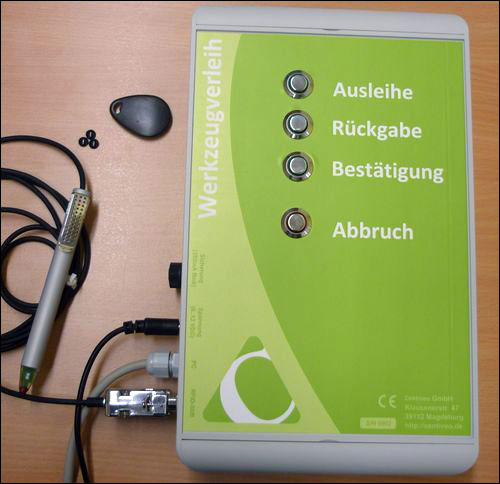Jun 14, 2012ThyssenKrupp Electrical Steel, a division of steel producer ThyssenKrupp Steel Europe, manufactures electrical steel products (such as those for generators, transformers and electrical drives), using processes known as pickling, cold rolling and annealing—all of which require a variety of tools. Seven months ago, the company adopted radio frequency identification to manage those tools at the ThyssenKrupp Electrical Steel plant in Bochum, Germany. Now, ThyssenKrupp Steel Europe reports that it is considering expanding is adoption of the technology to manage assets at its other sites. The solution was provided by Centiveo, a spin-off of Siemens.
The company provides tools for its own staff, as well as for contractors entering the facility to provide services. The tools are stored within a crib, from which users borrow items as needed. Until October 2011, managing those assets was accomplished via a manual recording method; however, there were shortcomings involved in directing workers to write down on paper which individuals were borrowing which tools.

The 150-square-meter (1,614-square-foot) crib stores approximately 450 tools, including hand tools, impact wrenches, chain hoists, measuring instruments and lifting accessories. Over time, it became increasingly difficult and time-consuming to document who checked out which items. The firm had created lists for specific tool categories, some of which overlapped. According to the company, it became too time-consuming for staff members to look through the lists and record the appropriate information regarding which tools were checked out by which personnel. What's more, there was the potential for errors.
The company sought a solution that would not only automate the tool-loaning process, but also track each tool's maintenance history and cycles. In response to that need, Centiveo created an "Ausleihbox" (borrowing box) solution.
With the Centiveo system, ThyssenKrupp Steel Europe attached a Microsensys D6.7-Tagspecial 2-kilobit 13.56 MHz high-frequency (HF) RFID tag to each tool, compliant with the ISO 15693 standard. Near the doorway serving as the tool crib's entrance and exit, the company installed a "borrowing box"—a device that includes a Microsensys PENmini RFID reader—according to Andre Hanisch, Centiveo's business-development manager. In addition, staff members carry B-Id KF23 key fobs with embedded 13.56 MHz HF RFID inlays.
The staff can also use the system to list maintenance or inspection processes undertaken with regard to a specific tool. The software stores that information, and can issue an alert to management indicating which items are due for maintenance or inspection during the coming days. That alert status is then updated once the tool is appropriately serviced. This, says Philipp Torno, an engineer at ThyssenKrupp Steel Europe, ensures that products are never used without proper inspection and maintenance—which, the company notes, is an important safety feature.
The benefits to ThyssenKrupp Steel Europe include having an improved record of tool maintenance and inspections, as well as a saving in time that the firm's staff previously spent checking tools into and out of the crib. "The savings are mostly savings in time," Torno states.
This is not the steel company's first use of radio frequency identification. In 2007, it piloted an RFID solution to track steel slabs sent to Germany from its plant in Sepetiba, Brazil (see ThyssenKrupp Steel Europe to use EPC UHF Tags to Track Steel).
The company is now considering some of its other manufacturing sites, to determine where the tool-tracking RFID system could be of benefit at those locations.

